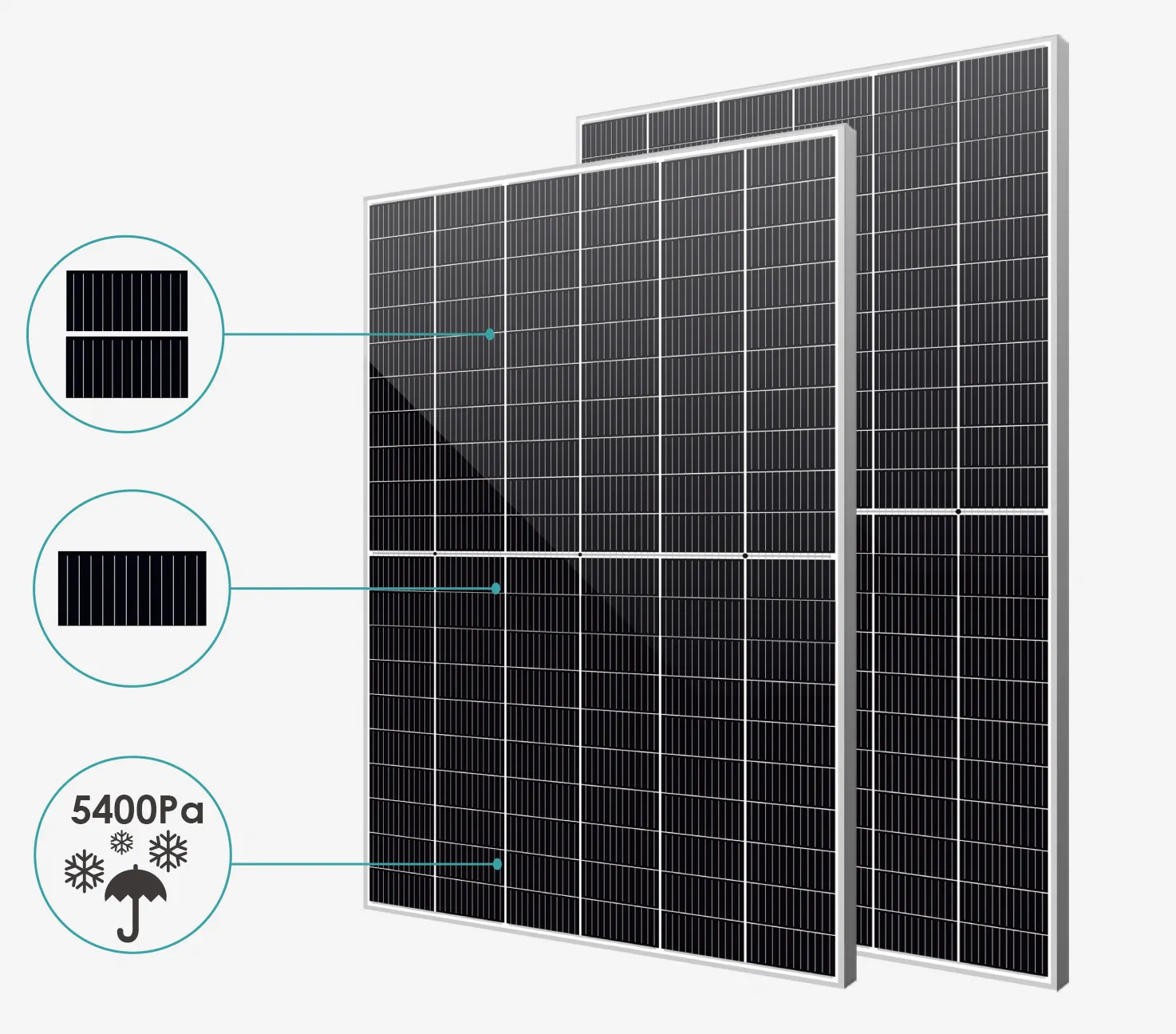The solar panel is primarily composed of several components, including an aluminum frame, glass, high-transmittance EVA, solar cells, high-stop EVA, back cover, and junction box.
- Aluminum Frame: Provides mechanical support and protection, ensuring the stability and durability of the solar panel.
- Glass: Protects the solar cells from external environmental influences while allowing sunlight to pass through. Depending on the usage environment, low-iron non-coated tempered glass or coated tempered glass can be selected.
- High-Transmittance EVA: Positioned between the glass and the solar cells, it serves to bond and protect, with high light transmittance to ensure effective sunlight transmission to the solar cells.
- Solar Cells: The core component of the solar panel, responsible for converting light energy into electrical energy. Depending on the manufacturing process, solar cells can be classified as monocrystalline or polycrystalline cells.
- High-Stop EVA: Located between the solar cells and the back cover, it prevents light loss after passing through the solar cells.
- Back Cover: Acts as the bottom layer in contact with the environment, protecting the solar cells from moisture and mechanical damage. Common types of back covers include TPT, KPE, TPE, KPK, FPE, and nylon.
- Junction Box: Used to connect the internal circuits of the solar panel to the external cables, ensuring effective power output.






